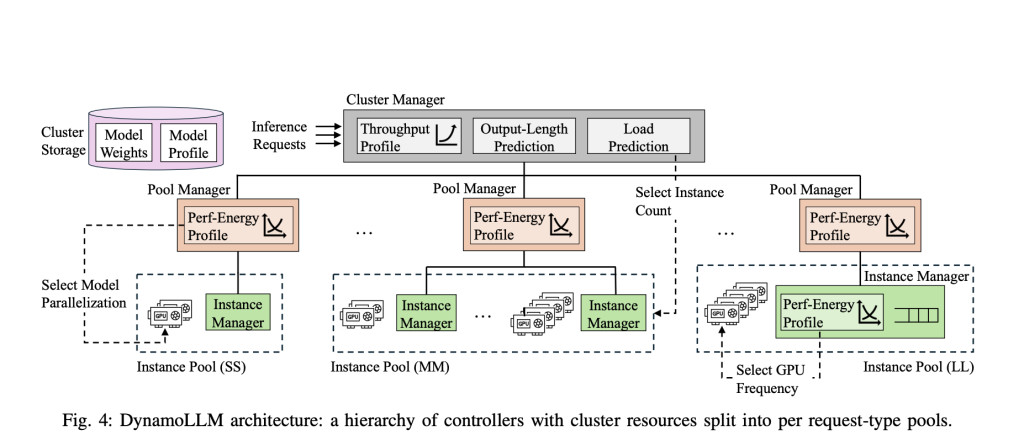Generative Large Language Models (LLMs) have become an essential part of many applications due to their quick growth and widespread use. LLM inference clusters manage a massive stream of queries, each with strict Service Level Objectives (SLOs) that must be fulfilled to guarantee adequate performance, as these models have become more integrated into different services. LLMs are usually executed on powerful, high-performance GPUs to meet these expectations. This method guarantees that the models can handle data quickly and precisely, but it also consumes a lot of energy and increases carbon emissions.
There exists a significant potential to augment the energy efficiency of LLM inference clusters by the utilization of the intrinsic heterogeneity present in their compute attributes and the organic oscillations in workloads. This means that the energy consumption of the inference clusters can be optimized by knowing the distinct processing requirements of different LLM tasks and how these requirements vary over time. For instance, various kinds of queries may require varying amounts of processing power; these differences can be taken advantage of to reduce energy use without sacrificing functionality.
However, the LLM inference environment’s intricacy and dynamics present a problem. Finding the ideal system configuration becomes extremely difficult since there are so many factors to consider, including the number of model instances, the level of model parallelism, and the frequency at which the GPUs operate. It is challenging to determine which configuration is the most efficient at any given moment since each potential configuration presents a unique trade-off between performance and energy consumption.
In response to these limitations, a team of researchers from the University of Illinois at Urbana-Champaign and Microsoft has created a unique energy-management framework called DynamoLLM that is intended for use in LLM inference contexts. With the aim of optimizing energy usage and cost, DynamoLLM has been engineered to automatically and dynamically rearrange the inference clusters while guaranteeing that the service’s performance SLOs are fulfilled. This means that DynamoLLM finds the best potential trade-offs between computational power and energy efficiency by continuously monitoring the system’s performance and adjusting the configuration as necessary.
Key inference cluster characteristics that affect DynamoLLM’s performance include the number of running instances, the degree of model parallelism among GPUs, and the frequency of GPU operations. By adjusting these parameters in real-time, DynamoLLM can drastically cut energy use and carbon emissions without compromising service quality. In particular, it has been demonstrated that DynamoLLM can save up to 53% of the energy normally needed by LLM inference clusters at the service level. It can also cut consumer prices by 61% and operational carbon emissions by 38%, all while keeping latency SLOs at the required levels to guarantee the service’s continued effectiveness and responsiveness.
The team has summarized their primary contributions as follows.
The team has discussed ways to increase energy efficiency in LLM serving, with a particular emphasis on the varied and erratic nature of inference workloads. This analysis demonstrates how different computational needs can be used to maximize energy efficiency.
The team has presented the DynamoLLM Framework, a unique framework created especially to reconcile energy conservation and high performance in LLM inference. DynamoLLM modifies system configurations in real time to maximize resource use.
Using production-level, real-world data, DynamoLLM is subjected to a thorough large-scale platform evaluation. The assessment has shown how well the framework works to save energy use while upholding performance requirements.
In conclusion, DynamoLLM is a significant advancement in the race to improve the sustainability and economics of LLMs, tackling both financial and environmental issues in the quickly developing field of Artificial Intelligence.
Check out the Paper. All credit for this research goes to the researchers of this project. Also, don’t forget to follow us on Twitter and join our Telegram Channel and LinkedIn Group. If you like our work, you will love our newsletter..
Don’t Forget to join our 48k+ ML SubReddit
Find Upcoming AI Webinars here
The post DynamoLLM: An Energy-Management Framework for Sustainable Artificial Intelligence Performance and Optimized Energy Efficiency in Large Language Model (LLM)Â Inference appeared first on MarkTechPost.
Source: Read MoreÂ

